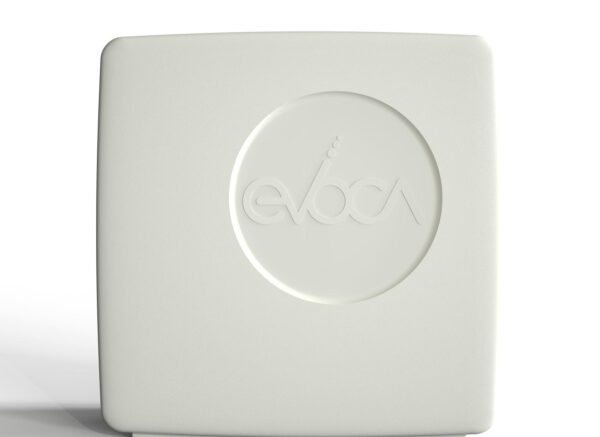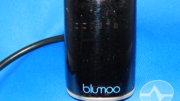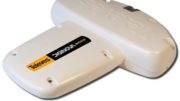The last antenna you’ll ever need? That might be the Televes Evoca. There’s no other antenna out there with a combination of features like this one. It’s so capable that the only way to even talk about is with a bulleted list. So, here goes.
- It’s an indoor antenna.
- It’s an outdoor antenna.
- It can be wall mounted or mast mounted.
- It receives over-the-air signals.
- It receives low-band 5G signals.
- It is all set up to receive advanced NextGen TV signals (more on that below)
- It has three powerful amplifiers.
- It works without the amps if you don’t need them.
- It has a reflector but you don’t have to use it if you don’t want to.
That’s a lot, right? But does it live up to the hype? Let’s dig in.
Here’s a video review if you’d rather watch than read.
The basics of this antenna
This is a panel antenna that receives VHF-High, 5G, and UHF signals. It doesn’t seem to block VHF-Low signals, it’s just not terribly good at receiving them. It’s a pretty big antenna, measuring about 15 inches by 15 inches. That puts it in line with other mid-size outdoor antennas, but you’ll definitely notice it in the room if you’re using it indoors.
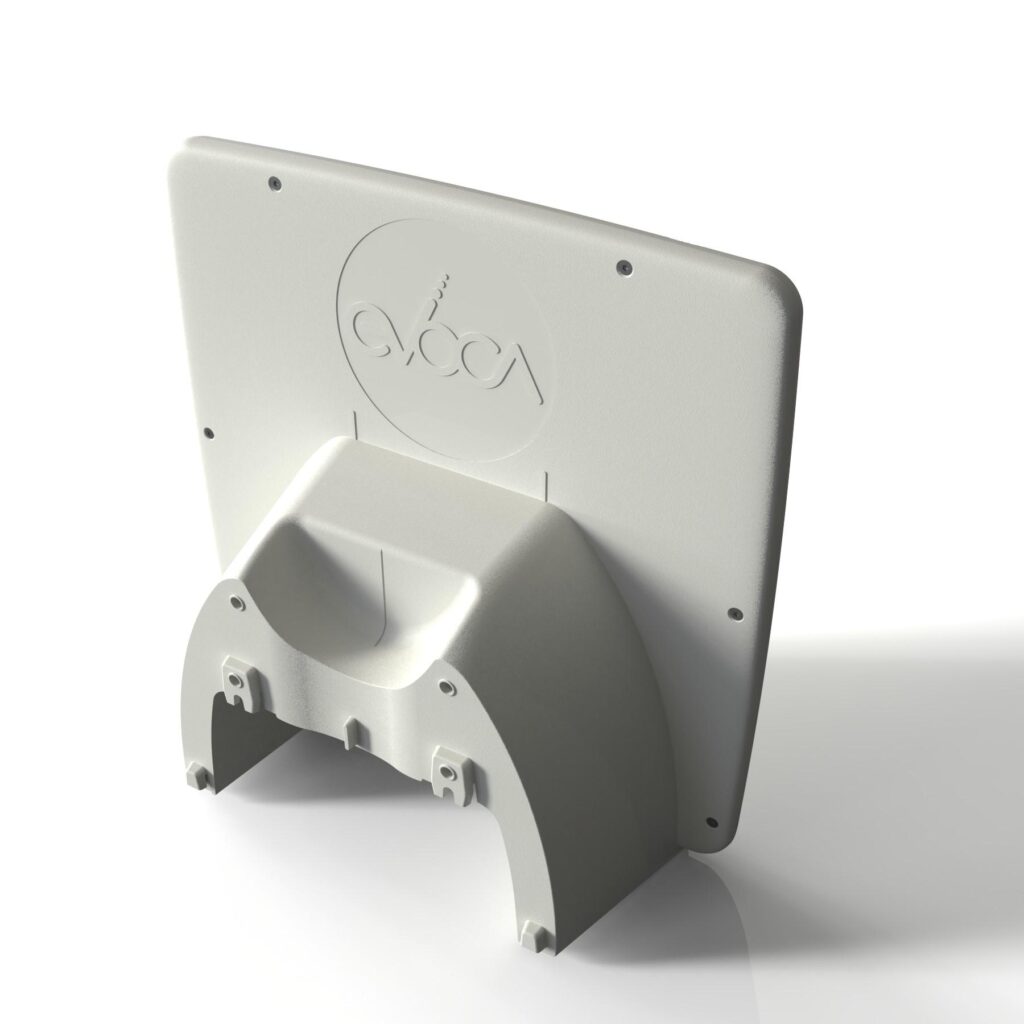
What gives this antenna its indoor cred is a design that weights it down toward the bottom and gives it a solid base. This does make the antenna a bit thicker but you probably wouldn’t notice that outdoors.
You’ll also notice from the above picture that you can use the top mounting points as keyhole slots so it can be mounted flush to a wall. In that case the wall itself acts as a reflector.
There’s also an optional reflector that can be used to get about 2.5dB more signal. It’s a decent piece, made of metal, and it attaches easily to the back of the Evoca with supplied screws.

For outdoor installations, the reflector attaches as you see it above. This gives it the best possible coverage but it does dip a little beyond the bottom of the antenna. So, there’s an option for mounting it differently to preserve the base of the antenna as well.

If you attach the antenna with the screws going into the lower set of holes, it will easily sit up on a tabletop.
How this antenna is different from other Televes antennas
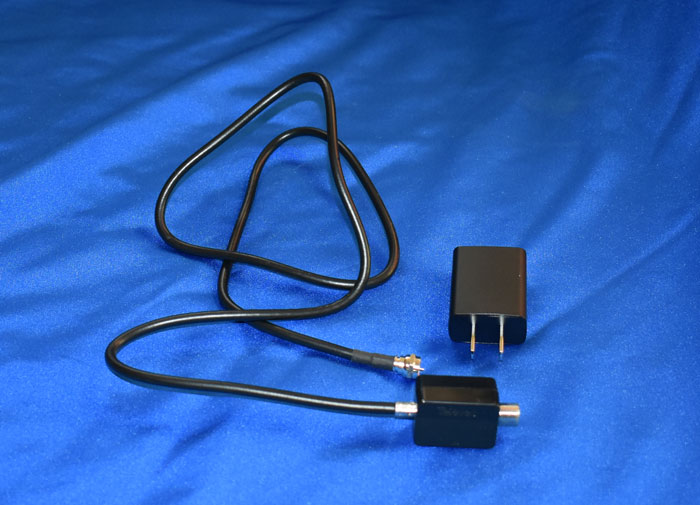
This is Televes’ first antenna with a 5 volt power injector rather the standard Televes power injector they use for every other antenna. This means the injector itself is a little smaller and less obtrusive. It also means that it can be powered from any USB power supply. The only downside I would say is that it uses a MicroUSB connector at the power injector instead of USB-C. However since you won’t be unplugging and replugging it a lot, you won’t be bothered by the fact that MicroUSB is totally idiotic.
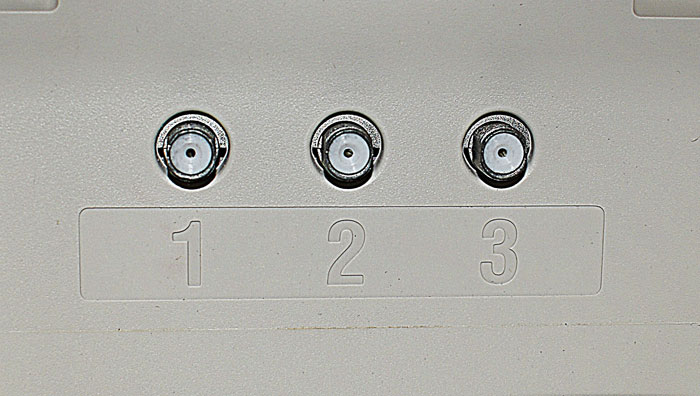
The other thing that makes this antenna different, not only from Televes antennas but from pretty much any other antenna, is its three F connectors. It’s important to understand which to use and for what purpose.
Output #1: 5G/cellular
This is a 5G antenna as well as a TV antenna. Unfortunately you can’t really diplex both onto the same cable so you will still need to run two cables into the house.
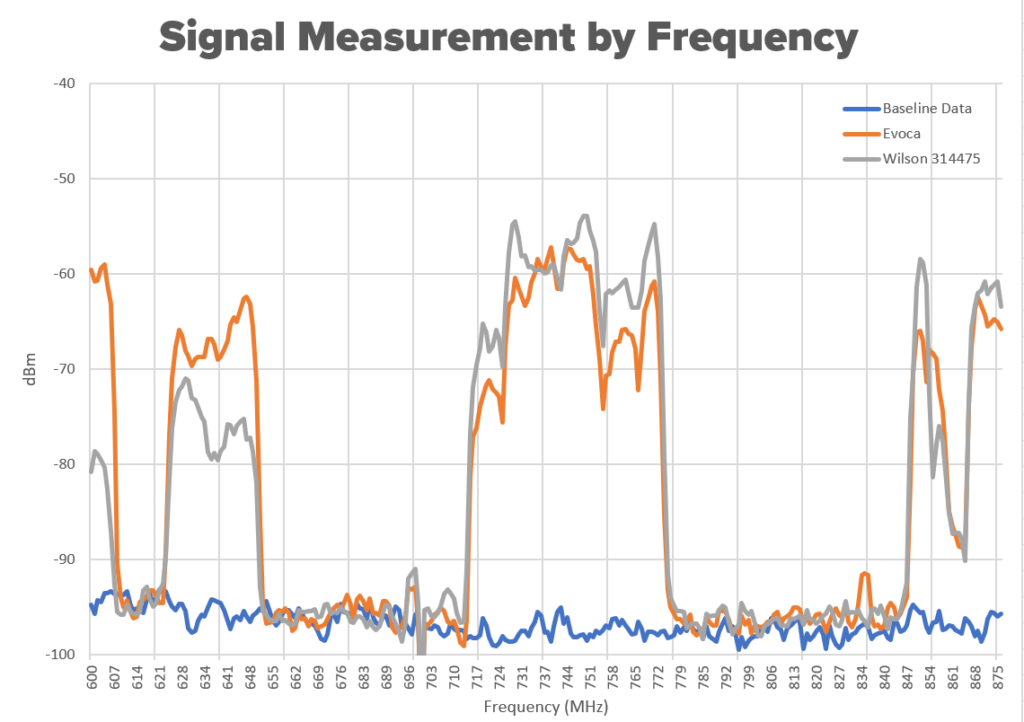
I used the spectrum analyzer to test this antenna compared to Wilson’s 314475 cellular antenna. As you can see the performance was fairly similar. If you’re looking for 600MHz 5G performance, the Evoca does look like it will do a better job, but remember that currently, cell boosters don’t work with that range.
Output #2: Future use
For the second output, the Evoca picks up TV frequencies, but will not pick up TV signals because of the way the antenna is oriented. TV signals in the US are horizontally polarized, meaning that the waves travel from side to side. The connector labeled 2 in the photo picks up those same frequencies but only vertically polarized signals (in other words, those where the waves go up and down.)
This is really a futureproofing option. One of the possibilities for the next generation of TV broadcasting would be having data signals travel on vertically-polarized waves. If that comes to pass, you’ll see this being the only antenna on the market designed to pick them up. You could use something like a Dinova Boss Mix and turn it sideways, but it would be a second antenna. One of the nicer things about Evoca is that it won’t make your home look like an antenna farm.
Output #3: TV Signals
For a compact antenna, the Evoca does a very good job. It compares very favorably to the Dinova Boss Mix, which really isn’t an indoor antenna. It actually picked up several channels that the smaller Dinova did not get at all.
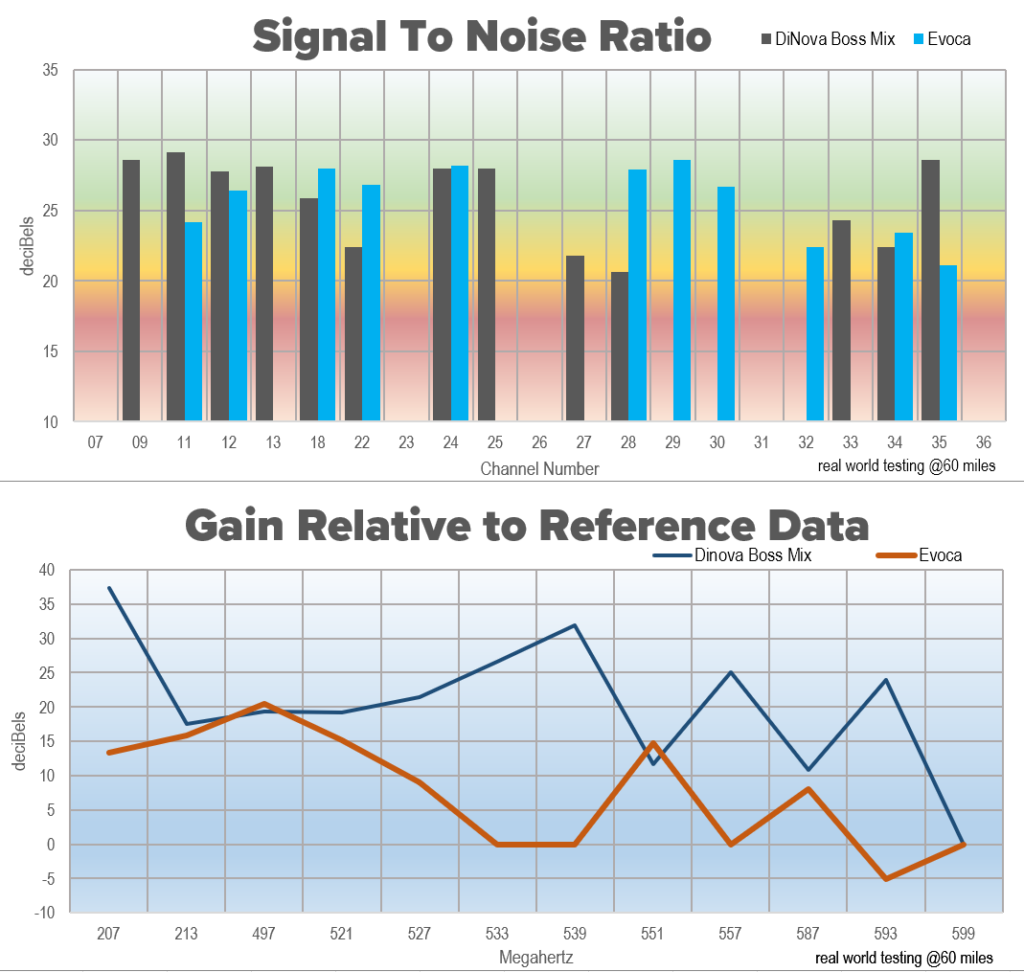
There’s no question that the Dinova wins on raw gain, thanks to its more powerful amplifier. However, when you look at signal-to-noise ratio, which is really a much better measurement of how well an antenna will pick up TV signals, the Evoca meets or beats the Dinova on most channels. Of course, this is just one location, and each antenna will perform differently in different locations.
The one thing you really need to know
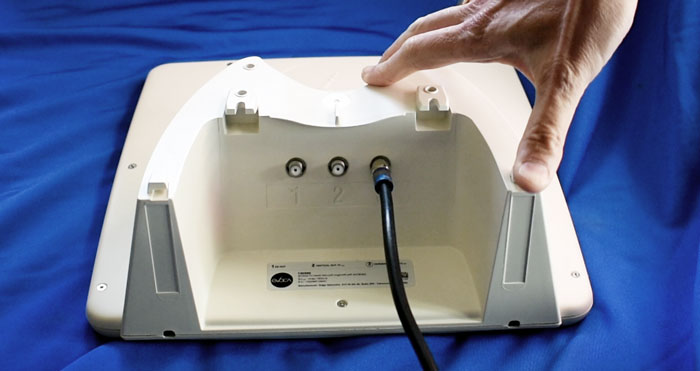
Seeing three outputs on an antenna is going to confuse some people. If you’re using this for TV reception, you must connect to port #3. The power injector must also go to port #3 so if you are using this as a cellular antenna and want the built-in preamp, you must also run a line to port #3.
I’d also recommend connecting all the cables before putting on the reflector. With the reflector on, it’s hard to see what you’re doing and it can take a little longer.
Overall observations
I like this antenna a lot. But then I’m a big fan of Televes build quality. The plastic seems very decent and the reflector does not look like it would bend easily.
Yes, this is a more expensive antenna. But if you’re looking for something you can use inside as well as outside, this is going to be a great option for you. When mounted outside it did surprisingly well at 60 miles in our Los Angeles-area test lab. This is an antenna you can buy once and take from location to location. Chances are as long as you’re in the suburbs, it will pick up the channels you want.
I also like the futureproof aspect of the Evoca. It’s a good choice for someone who’s in the antenna game for the long run. I would like it even better if the three outputs could be diplexed into a single cable run but I understand the limitations of that and I see why it wouldn’t work.
The Televes Evoca is now available at SolidSignal.com! If you have questions about it or any of the antennas we offer, call us at 888-233-7563. We’re here for you during East Coast business hours. If it’s after hours, fill out the form below and we’ll get right back to you.

